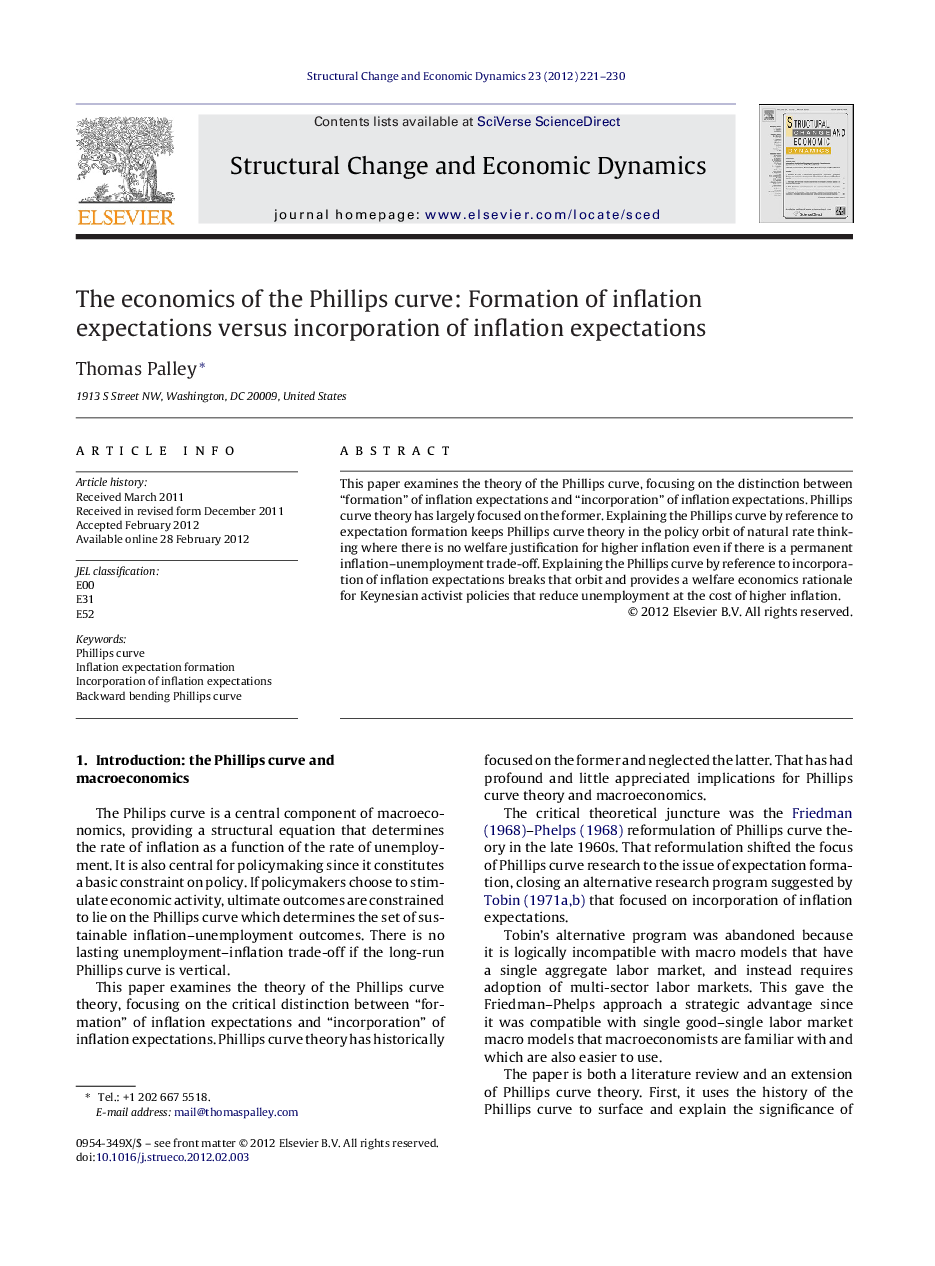| Article ID | Journal | Published Year | Pages | File Type |
|---|---|---|---|---|
| 986963 | Structural Change and Economic Dynamics | 2012 | 10 Pages |
This paper examines the theory of the Phillips curve, focusing on the distinction between “formation” of inflation expectations and “incorporation” of inflation expectations. Phillips curve theory has largely focused on the former. Explaining the Phillips curve by reference to expectation formation keeps Phillips curve theory in the policy orbit of natural rate thinking where there is no welfare justification for higher inflation even if there is a permanent inflation–unemployment trade-off. Explaining the Phillips curve by reference to incorporation of inflation expectations breaks that orbit and provides a welfare economics rationale for Keynesian activist policies that reduce unemployment at the cost of higher inflation.
► I examine Phillips curve theory, focusing on the distinction between “formation” and “incorporation” of inflation expectations. ► The Friedman–Phelps–Lucas approach to the Phillips curve emphasizes expectation formation. ► That approach weds Phillips curve theory to natural rate thinking where there is no welfare justification for higher inflation. ► Explaining the Phillips curve via incorporation of inflation expectations creates a welfare justification for higher inflation.
